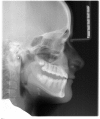Osteogenesis imperfecta: potential therapeutic approaches
- PMID: 30128210
- PMCID: PMC6100848
- DOI: 10.7717/peerj.5464
Osteogenesis imperfecta: potential therapeutic approaches
Abstract
Osteogenesis imperfecta (OI) is a genetic disorder that is usually caused by disturbed production of collagen type I. Depending on its severity in the patient, this disorder may create difficulties and challenges for the dental practitioner. The goal of this article is to provide guidelines based on scientific evidence found in the current literature for practitioners who are or will be involved in the care of these patients. A prudent approach is recommended, as individuals affected by OI present with specific dentoalveolar problems that may prove very difficult to address. Recommended treatments for damaged/decayed teeth in the primary dentition are full-coverage restorations, including stainless steel crowns or zirconia crowns. Full-coverage restorations are also recommended in the permanent dentition. Intracoronal restorations should be avoided, as they promote structural tooth loss. Simple extractions can also be performed, but not immediately before or after intravenous bisphosphonate infusions. Clear aligners are a promising option for orthodontic treatment. In severe OI types, such as III or IV, orthognathic surgery is discouraged, despite the significant skeletal dysplasia present. Given the great variations in the severity of OI and the limited quantity of information available, the best treatment option relies heavily on the practitioner's preliminary examination and judgment. A multidisciplinary team approach is encouraged and favored in more severe cases, in order to optimize diagnosis and treatment.
Keywords: Bisphosphonates; Crowns; Dentinogenesis imperfecta; Genetics; Orthodontic; Orthodontics; Osteogenesis imperfecta; Osteonecrosis of the jaw; Rare bone disease; Surgery.
Conflict of interest statement
The authors declare that they have no competing interests.
Figures





References
LinkOut - more resources
Full Text Sources
Other Literature Sources

